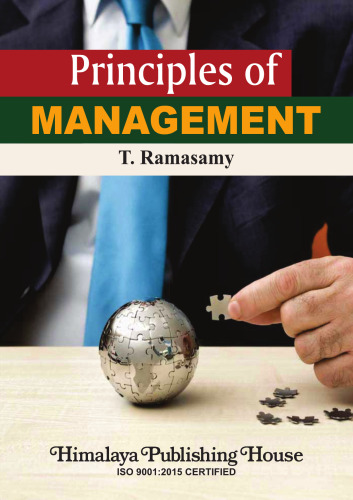Chapter 1The Sports and Media Partnership Live sport in the 21st century is part of the ever-broadening spectrum of entertainment available via the electronic media, sharing bandwidth alongside dramas and comedies, news and information, reality and game shows, musical performances, and every new iteration of documentary, commentary, cooking, home improvement, or automotive programming. Think of sports events as the original reality television: unscripted enter- tainment playing out live before your eyes with unexpected plot turns, spontaneous moments of elation and disappointment, and often surprise endings. Television shines a powerful spotlight on star performers and successful teams, enhancing the magnitude of their rivalries, milestones, and the importance of their stories during a game, a season, or a career. Sports organizations and the electronic media are partners in deliver- ing events to the public. The organizers stage the competitions, and the media promote and present the content with all its messaging to the public. Together they share the advertising, sponsorship, and subscription rev- enue, which amounts to billions of dollars, euros, and various currencies every year. It is a symbiotic relationship with both parties benefiting from their joint efforts. Rights payments by the media fuel the economic engine of sports. The electronic and digital media benefit from sports because the games and events attract a proven, loyal audience of millions who will buy sub- scriptions to sports television and digital services. These fans are the target for sponsors and advertisers who pay the media dearly for the opportunity to communicate their sales messages to so many potential customers on such popular platforms. The media convergence of the 21st century has made it possible for a content producer to distribute video, information, stories, and promotion via every medium and channel, including stream- ing and social media, direct to consumers. The greater the cross-platform, cross-promotional power of these media producers, the greater the benefit derived by their sports team, league, and organizer partners. Big money and massive audiences create power for the sports industry and the media: economic, social, cultural, and political power. DOI: 10.4324/9781003165590-1 1 2 CHAPTER 1 The Sports and Media Partnership THE SPORTS AUDIENCE In the first two decades of the 21st century, the top 20 most-watched tel- evision programs in the United States were all Super Bowls. The Nielsen Company reported that the most-watched single program in the history of American television was Super Bowl XLIX on February 1, 2015. An average of 114,440,000 viewers per minute watched the New England Patriots defeat the Seattle Seahawks on CBS, with an additional 973,000 streaming the live game and another 368,000 watching the Spanish lan- guage feed. The game was also transmitted live with commentary in more than 30 languages to over 170 countries and territories, adding several million more international viewers to the total audience. By comparison, the most-watched American entertainment program during that 20-year period was The Oscars telecast on March 2, 2014, which averaged 43.63 million viewers per minute in the United States, less than half the audi- ence of any Super Bowl from 2001 to 2020. In the years since 2015, the number of television viewers for Super Bowls has declined slightly, but the number of viewers streaming the game has grown geometrically. The US television audience has dropped below 100 million for a few Super Bowls, but when the streaming numbers are combined with the total “out of home” viewers and those watching on Spanish language channels, the “Total Audience Delivery” (TAD) for the Super Bowl is still the largest draw in the entire video entertainment spectrum with an audience each year of around 90–100 million viewers per minute. If the only people who watched Super Bowls were the fans of the two teams playing in that game, the total audience would be much smaller. Clearly, the game’s power to bring family and friends together for Super Bowl par- ties helps build the audience as does the attraction that Americans have for big events like the Olympics, The Oscars, and championship games. As a result, Super Bowl Sunday has become the most important advertis- ing day of the year in the United States. An audience of millions for every minute of a live program means there will be plenty of commercials sold to advertisers keen on increasing awareness and sales for their products and services. The audience is so large, and demand is so high that the asking price for a single 30-second spot in the Fox telecast of Super Bowl LIV in February of 2020 was $5.6 million. Kantar Media estimated that Fox col- lected $435 million for the advertising it sold during Super Bowl LIV. Fox also sold commercials during their five hours of pre-game programming and the post-game celebration, which brought the network’s revenue total to almost half a billion dollars for that one da
چکیده فارسی
فصل 1 مشارکت ورزش و رسانه ورزش زنده در قرن بیست و یکم بخشی از طیف گسترده سرگرمی است که از طریق رسانه های الکترونیکی در دسترس است، به اشتراک گذاری پهنای باند در کنار نمایش ها و کمدی ها، اخبار و اطلاعات، نمایش های واقعیت و بازی، اجراهای موسیقی، و هر تکرار جدید مستند، تفسیر، آشپزی، بهسازی خانه یا برنامهنویسی خودرو. رویدادهای ورزشی را بهعنوان تلویزیون واقعیت اصلی در نظر بگیرید: سرگرمیهای بدون فیلمنامه که بهطور زنده جلوی چشمان شما پخش میشوند با چرخشهای داستانی غیرمنتظره، لحظات خود به خودی شادی و ناامیدی، و اغلب پایانهای غافلگیرکننده. تلویزیون یک کانون توجه قدرتمند را بر روی بازیگران ستاره و تیمهای موفق میتاباند و بر بزرگی رقابتها، نقاط عطف و اهمیت داستانهای آنها در طول یک بازی، یک فصل یا یک حرفه افزوده میشود. سازمانهای ورزشی و رسانههای الکترونیکی در ارائه رویدادها به مردم شریک هستند. برگزارکنندگان مسابقات را به راه می اندازند و رسانه ها محتوا را با تمام پیام هایش به مردم تبلیغ و ارائه می کنند. آنها با هم درآمد تبلیغات، حمایت مالی و اشتراک را به اشتراک می گذارند که هر ساله به میلیاردها دلار، یورو و ارزهای مختلف می رسد. این یک رابطه همزیستی با هر دو طرف است که از تلاش های مشترک آنها سود می برند. پرداخت حقوق توسط رسانه ها موتور اقتصادی ورزش را تقویت می کند. رسانههای الکترونیکی و دیجیتالی از ورزش سود میبرند زیرا بازیها و رویدادها میلیونها مخاطب ثابت و وفادار را جذب میکنند که اشتراک تلویزیون ورزشی و خدمات دیجیتال را خریداری میکنند. این طرفداران هدف حامیان مالی و تبلیغکنندگانی هستند که به رسانهها برای فرصتی برای انتقال پیامهای فروش خود به بسیاری از مشتریان بالقوه در چنین پلتفرمهای محبوبی هزینه گزافی میپردازند. همگرایی رسانه ای قرن بیست و یکم این امکان را برای تولیدکنندگان محتوا فراهم کرده است که ویدئو، اطلاعات، داستان ها و تبلیغات را از طریق هر رسانه و کانالی، از جمله پخش جریانی و رسانه های اجتماعی، مستقیماً برای مصرف کنندگان توزیع کند. هرچه قدرت بین پلتفرمی و تبلیغات متقابل این تولیدکنندگان رسانه بیشتر باشد، تیم ورزشی، لیگ، و شرکای برگزارکننده آنها سود بیشتری خواهند داشت. پول کلان و مخاطبان انبوه باعث ایجاد قدرت برای صنعت ورزش و رسانه ها می شود: قدرت اقتصادی، اجتماعی، فرهنگی و سیاسی. DOI: 10.4324/9781003165590-1 1 2 فصل 1 مشارکت ورزش و رسانه مخاطبان ورزش در دو دهه اول قرن بیست و یکم، 20 برنامه تلویزیونی پربیننده برتر در ایالات متحده همگی Super Bowl بودند. شرکت نیلسن گزارش داد که پربیننده ترین برنامه در تاریخ تلویزیون آمریکا Super Bowl XLIX در 1 فوریه 2015 بوده است. به طور متوسط 114,440,000 بیننده در دقیقه، نیوانگلند پاتریوتز را با 973,000 نفر دیگر در CBS تماشا کردند. پخش زنده بازی و 368000 نفر دیگر در حال تماشای فید به زبان اسپانیایی. این بازی همچنین به صورت زنده همراه با تفسیر به بیش از 30 زبان به بیش از 170 کشور و منطقه منتقل شد و چندین میلیون بیننده بین المللی دیگر به کل مخاطبان اضافه کرد. در مقام مقایسه، پربیننده ترین برنامه سرگرمی آمریکایی در طول آن دوره 20 ساله، پخش تلویزیونی اسکار در 2 مارس 2014 بود که به طور متوسط 43.63 میلیون بیننده در دقیقه در ایالات متحده داشت، که کمتر از نیمی از تماشاگران سوپر باول در ایالات متحده بود. 2001 تا 2020. در سالهای پس از 2015، تعداد تماشاگران تلویزیونی برای Super Bowls اندکی کاهش یافته است، اما تعداد بینندگانی که بازی را پخش میکنند از نظر هندسی رشد کرده است. تماشاگران تلویزیونی ایالات متحده برای چند سوپربول به زیر 100 میلیون کاهش یافته است، اما هنگامی که تعداد پخش با مجموع بینندگان «خارج از خانه» و تماشاگران در کانالهای اسپانیایی زبان ترکیب شود، «تحویل کل مخاطب» (TAD) برای Super Bowl هنوز هم بزرگترین قرعه کشی در کل طیف سرگرمی های ویدیویی است که هر سال بین 90 تا 100 میلیون بیننده در دقیقه دارد. اگر تنها افرادی که Super Bowls را تماشا میکردند، طرفداران دو تیمی بودند که در آن بازی بازی میکردند، تعداد تماشاگران بسیار کمتر میشد. واضح است که قدرت بازی برای گرد هم آوردن خانواده و دوستان برای میهمانیهای Super Bowl به ایجاد مخاطب کمک میکند، همانطور که جذابیتی که آمریکاییها برای رویدادهای بزرگی مانند المپیک، اسکار و بازیهای قهرمانی دارند. در نتیجه، یکشنبه سوپر باول به مهمترین روز تبلیغاتی سال در ایالات متحده تبدیل شده است. میلیون ها مخاطب برای هر دقیقه از یک برنامه زنده به این معنی است که تبلیغات زیادی به تبلیغ کنندگانی که علاقه مند به افزایش آگاهی و فروش محصولات و خدمات خود هستند فروخته می شود. تعداد مخاطبان آنقدر زیاد است و تقاضا آنقدر زیاد است که قیمت درخواستی برای یک قسمت 30 ثانیه ای در پخش تلویزیونی Super Bowl LIV در فاکس در فوریه 2020 5.6 میلیون دلار بود. Kantar Media تخمین زد که فاکس 435 میلیون دلار برای تبلیغاتی که در جریان Super Bowl LIV فروخت جمع آوری کرد. فاکس همچنین در طول پنج ساعت برنامهریزی قبل از بازی و جشن بعد از بازی آگهیهای بازرگانی فروخت که مجموع درآمد شبکه را به تقریباً نیم میلیارد دلار برای آن یک دا
رساند.
ادامه ...
بستن ...
Second edition published 2022
by Routledge
605 Third Avenue, New York, NY 10158
and by Routledge
4 Park Square, Milton Park, Abingdon, Oxon, OX14 4RN
Routledge is an imprint of the Taylor & Francis Group, an informa business
© 2022 Dennis Deninger
The right of Dennis Deninger to be identified as author of this work has
been asserted in accordance with sections 77 and 78 of the Copyright,
Designs and Patents Act 1988.
All rights reserved. No part of this book may be reprinted or reproduced or
utilised in any form or by any electronic, mechanical, or other means, now
known or hereafter invented, including photocopying and recording, or in
any information storage or retrieval system, without permission in writing
from the publishers.
Trademark notice: Product or corporate names may be trademarks or
registered trademarks, and are used only for identification and explanation
without intent to infringe.
First edition published by Routledge 2012
Library of Congress Cataloging-in-Publication Data
Names: Deninger, Dennis, author.
Title: Live sports media : the what, how and why of sports broadcasting /
Dennis Deninger.
Other titles: Sports on television.
Description: Second edition. | Abingdon, Oxon ; New York, NY :
Routledge, 2022. | Includes bibliographical references and index.
Identifiers: LCCN 2021032298 | ISBN 9780367761202 (hardback) |
ISBN 9780367761219 (paperback) | ISBN 9781003165590 (ebook)
Subjects: LCSH: Television and sports. | Television broadcasting of sports. |
Mass media and sports.
Classification: LCC GV742.3 .D44 2022 | DDC 791.45/6579--dc23
LC record available at https://lccn.loc.gov/2021032298
ISBN: 978-0-367-76120-2 (hbk)
ISBN: 978-0-367-76121-9 (pbk)
ISBN: 978-1-003-16559-0 (ebk)
DOI: 10.4324/9781003165590
Typeset in Times New Roman
by Deanta Global Publishing Services, Chennai, India
ادامه ...
بستن ...




![Our mission to the court of Marocco [Morocco] in 1880, under Sir John Drummond Hay - pdf Our mission to the court of Marocco [Morocco] in 1880, under Sir John Drummond Hay - pdf](https://dl.libsan.ir/images/1/12/112108724_694b9e9769312.jpg)





